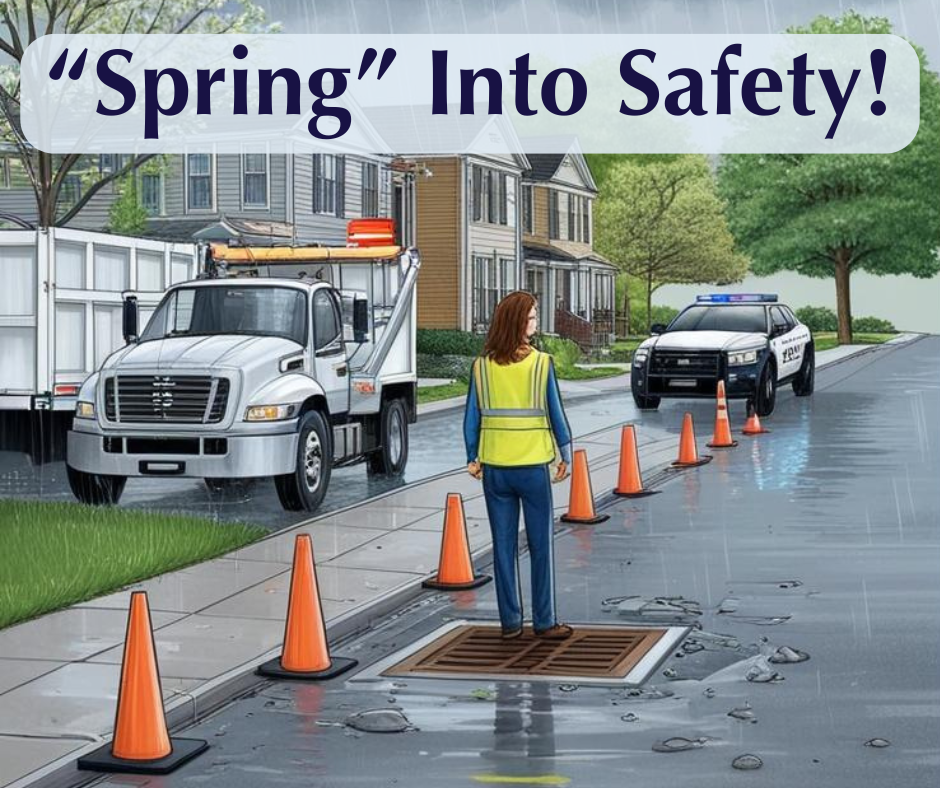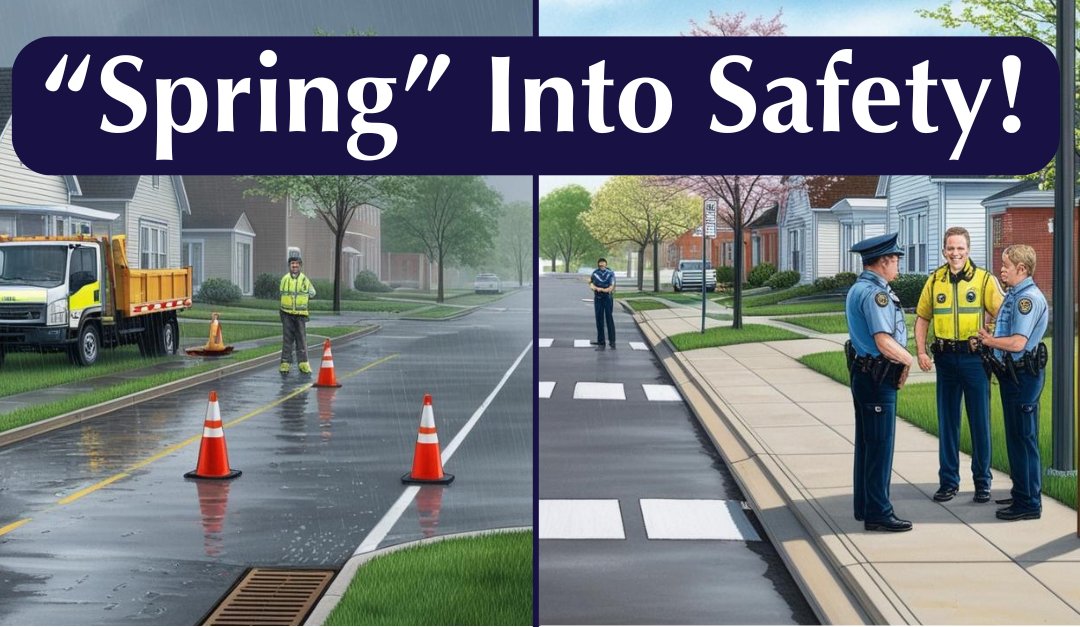As the days get longer and the temperatures rise, communities across the country are experiencing the shift from winter to spring. While the change of seasons brings a sense of renewal, it also presents unique public safety challenges. From severe weather events to an increase in certain types of crime, municipalities must be prepared to adapt to these seasonal transitions. For public safety officials, springtime requires a proactive approach to ensure that communities stay safe and well-prepared.
In this blog, we’ll explore effective strategies for enhancing public safety during the spring season, with a focus on severe weather preparedness, crime prevention, and community engagement.
Prepare for Severe Weather Events
Spring weather is known for its volatility. While it may be sunny one day, the next could bring heavy rain, thunderstorms, or even tornadoes. Municipalities must be ready to respond to these fluctuating conditions with well-developed emergency management plans. Here are a few key steps to consider:
- Review Emergency Response Plans: Ensure that your emergency response plans are up-to-date and have been tested for different weather scenarios. This includes reviewing evacuation routes, shelter locations, and communication protocols with local first responders.
- Strengthen Infrastructure: Assess infrastructure for any vulnerabilities that could be exacerbated by spring storms, such as clogged drains or damaged roofs. Perform inspections and ensure that any necessary repairs or updates are made to prevent damage during heavy rainfall or wind events.
- Public Communication: Keep the community informed about weather-related risks. Utilize social media, local news outlets, and emergency alert systems to deliver timely and accurate updates. Make sure citizens know where to find shelter, how to prepare, and whom to contact in case of emergencies.
- Flood Preparedness: Spring is often associated with heavy rainfall, which can lead to flooding. Ensure that stormwater systems, such as drainage pipes and culverts, are clear of debris and function properly. If you are in an area prone to flooding, consider offering sandbags or other temporary measures to help protect vulnerable properties.
Address Seasonal Crime Trends
- Spring’s arrival can also signal a shift in crime trends. As the weather warms up, communities often see an increase in certain types of crimes, including property theft, vandalism, and drug-related offenses. It’s crucial to prepare law enforcement agencies for these changes and take steps to prevent criminal activity.
- Increased Patrols in High-Risk Areas: As more people spend time outdoors, certain areas may become hotspots for criminal activity. Increase patrols in parks, public spaces, and residential neighborhoods to deter potential criminals. Additionally, consider utilizing community policing strategies to build relationships with residents and promote trust between law enforcement and the public.
- Enhance Neighborhood Watch Programs: Spring is an ideal time to reignite or strengthen neighborhood watch programs. Encourage residents to stay vigilant, report suspicious activity, and work together to enhance community safety. Provide resources and training to ensure that these programs are effective and collaborative.
- Targeted Crime Prevention Campaigns: Focus on specific crime trends that tend to increase in spring. For example, vehicle break-ins and home burglaries may rise as people leave their homes more often. Launch community awareness campaigns to educate residents on how to protect their property, such as securing windows and doors, keeping valuables out of sight, and installing home security systems.
- Youth and Juvenile Crime Prevention: Spring also marks the end of the school year, which can lead to an uptick in youth-related crime, such as vandalism or drug use. Focus on youth engagement programs that offer constructive activities, mentorship opportunities, and educational resources. By keeping young people engaged, you can reduce the likelihood of criminal behavior.
Prepare for Seasonal Traffic Changes
- With the arrival of spring, traffic patterns may shift, with more people out and about, attending events, enjoying outdoor activities, or simply traveling for vacations. Public safety departments should take steps to accommodate this increase in road activity and ensure that roadways are safe for all users.
- Spring Road Safety Campaigns: Focus on safe driving practices, such as obeying speed limits, avoiding distracted driving, and wearing seatbelts. Highlight specific seasonal dangers, like wet roads or potholes caused by the freeze-thaw cycle. Consider launching a public awareness campaign or partnering with local schools to educate the public on road safety.
- Address Construction Zones: Spring often brings an increase in road construction projects, which can create additional hazards. Make sure that proper signage is in place and that construction zones are clearly marked. Work with contractors to ensure that projects are completed with safety in mind for both workers and drivers.
- Encourage Pedestrian Safety: With more people walking, cycling, and enjoying outdoor activities, pedestrian safety becomes a higher priority. Ensure that crosswalks, bike lanes, and sidewalks are clearly marked and in good condition. Educate both pedestrians and drivers on how to share the road safely.

Focus on Mental Health and Well-being
- The transition to spring can also affect mental health, with some people experiencing increased stress or anxiety related to the change in seasons. Public safety agencies should consider providing resources and support to address these concerns.
- Community Outreach Programs: Offer mental health resources to residents who may be feeling overwhelmed or stressed during the seasonal transition. Consider creating community outreach programs or partnering with local organizations to provide counseling, support groups, and mental health awareness campaigns.
- Support for First Responders: Public safety officers themselves may experience stress and burnout during the spring due to the increased demands placed on their departments. Make sure that first responders have access to wellness programs, stress relief resources, and peer support networks to ensure that they are mentally and emotionally prepared for the challenges ahead.
Enhance Community Engagement and Preparedness
- Spring is the perfect time to build stronger relationships between public safety agencies and the community. By engaging residents and fostering open communication, municipalities can create a safer and more resilient environment for everyone.
- Host Public Safety Events: Organize town hall meetings, safety fairs, or community events focused on public safety education. These events are a great way to connect with residents, answer questions, and provide information on topics like weather preparedness, crime prevention, and road safety.
- Emergency Preparedness Drills: Conduct regular emergency preparedness drills that involve the community. Whether it’s a weather-related emergency or a public safety issue, practicing response protocols ensures that everyone knows what to do when the time comes.
A Proactive Approach to Spring Safety
As we embrace the warmth and renewal that spring brings, it’s important to be proactive about the public safety challenges that come with the changing season. By preparing for severe weather, addressing seasonal crime trends, ensuring traffic safety, and promoting mental well-being, municipalities can foster a safer, more resilient environment for their communities.
At Capital Strategic Solutions, we understand the unique challenges municipalities face during seasonal transitions. Our team can assist with developing tailored public safety strategies, offering insights into emergency preparedness, crime prevention, and community engagement. Together, we can help your community thrive during the spring season and beyond.

